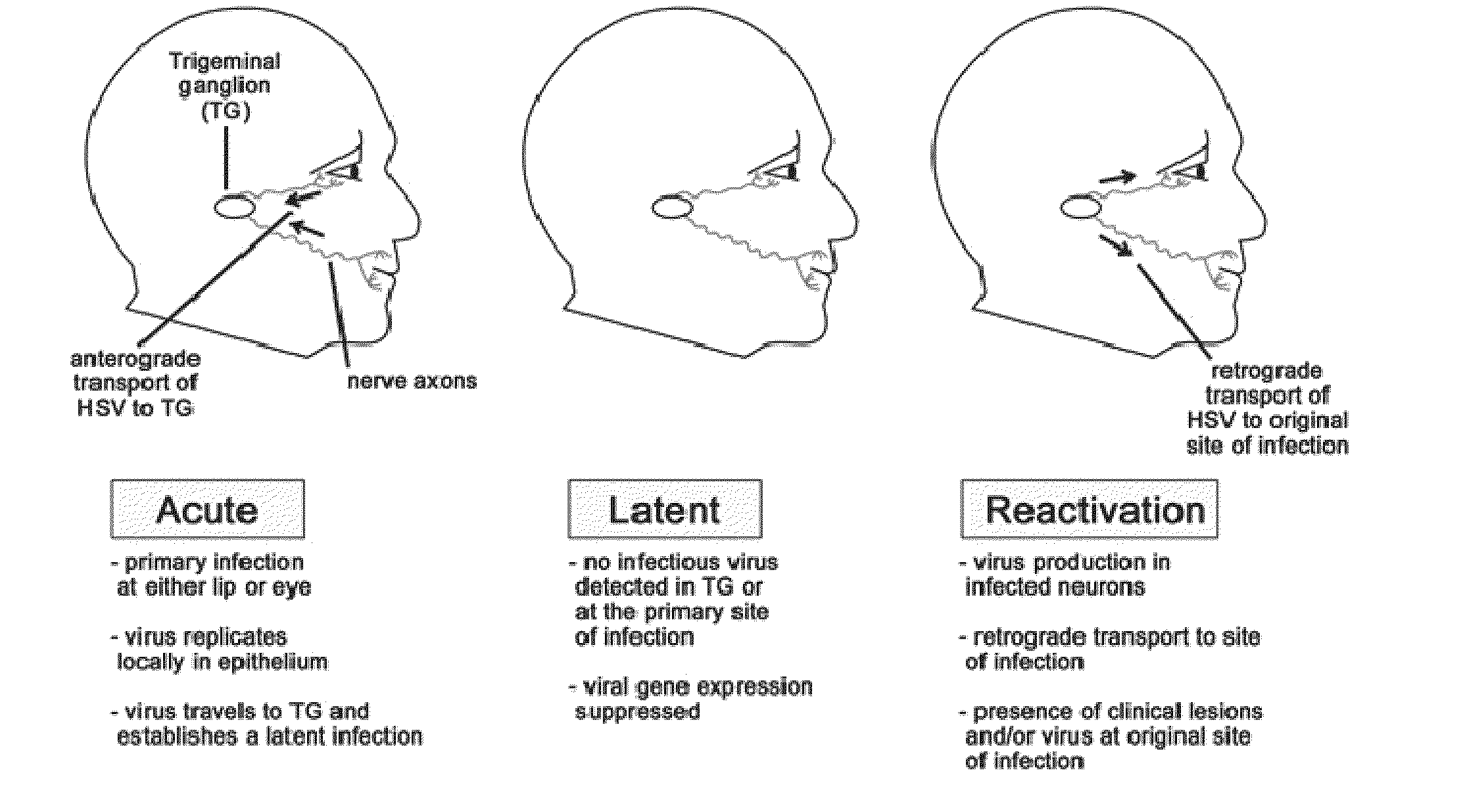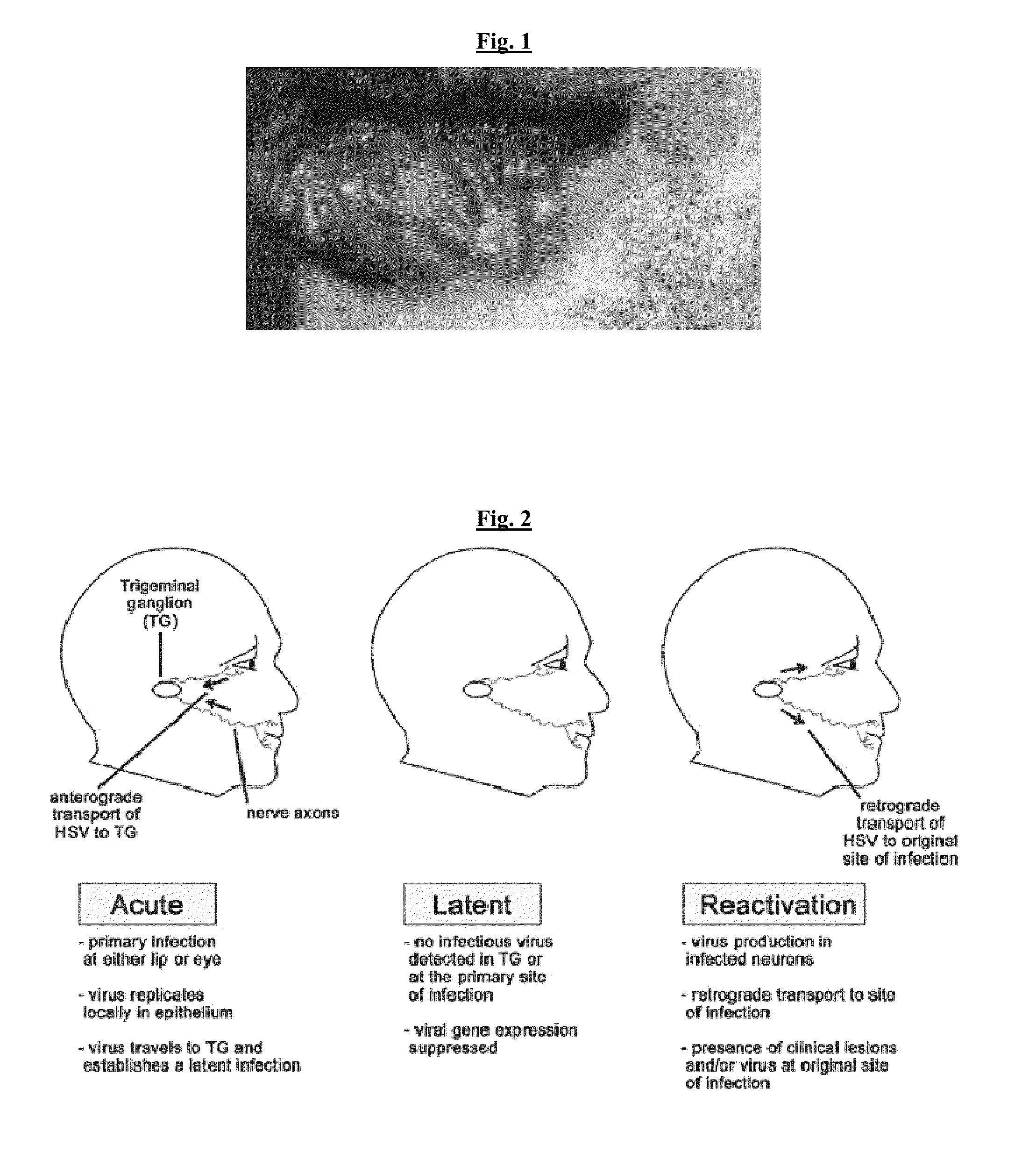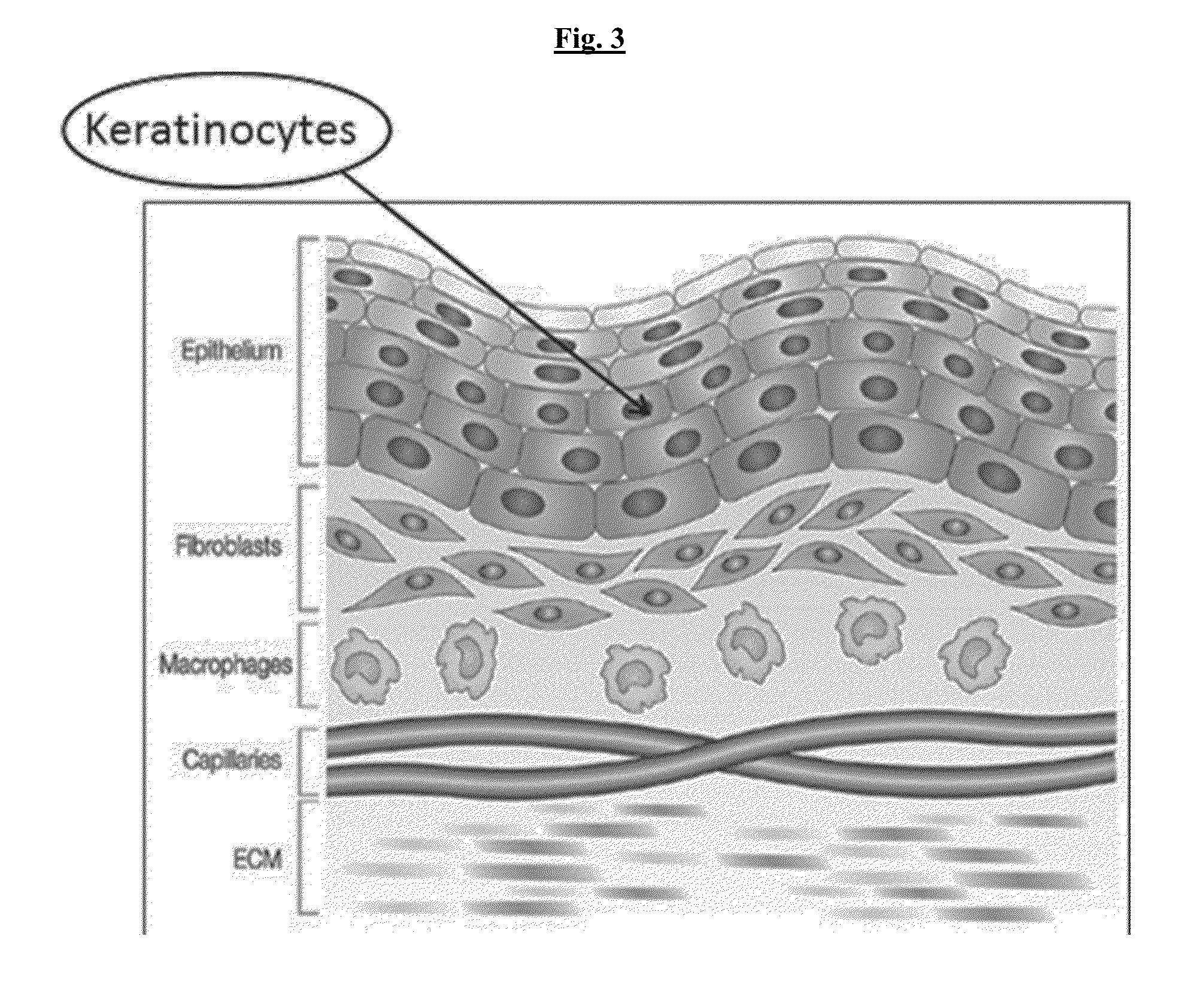Compositions Useful for Treating Herpes Simplex Labialis and/or Herpes Esophagitis, and Methods Using Same
- Summary
- Abstract
- Description
- Claims
- Application Information
AI Technical Summary
Benefits of technology
Problems solved by technology
Method used
Image
Examples
examples
[0191]The invention is now described with reference to the following Examples. These Examples are provided for the purpose of illustration only, and the invention is not limited to these Examples, but rather encompasses all variations that are evident as a result of the teachings provided herein.
Materials and Methods
Cells and Viruses
[0192]All cells were cultured at 37° C. and 5% CO2 and supplemented with 100 U / mL penicillin and 100 U / mL streptomycin. OKF6 / TERT2 human oral mucosal keratinocyte cells were cultured in GIBCO Keratinocyte serum free medium (K-sfm) supplemented with bovine pituitary extract, epidermal growth factor, and calcium chloride (Life Technologies Carlsbad, Calif.). These cells are immortalized by expression of hTERT (Dickson, et al., 2000, Mol. Cell. Biol. 20(4):1436-1447). EPC2 human esophageal epithelial cells were cultured in K-sfm (Carlsbad, Calif.). KOS strain (Smith, Proc. Soc. Exp. Biol. Med. Soc. Exp. Biol. Med. 115:814-816) of HSV-1 was used in all infec...
example
[0198]The infection of OKF6 cells (FIGS. 4A-4B) and EPC2 cells (FIG. 5) with the HSV-1 strain KOS was evaluated. Following HSV-1 infection, ATM was activated as determined by an increase of autophosphorylation of ATM on serine residue 1981, and phosphorylation of two well characterized ATM targets, Chk2 and Kap1.
[0199]Treatment of HSV-1-infected cells with KU-55933 inhibited ATM activation in OKF6 cells (FIG. 6). Treatment of OKF6 with either KU-55933 or Chk2 Inhibitor II reduced HSV-1 replication in a dose dependent manner as measured by qPCR and viral yield. (FIGS. 7A-7C). Treatment of OKF6 with KU-55933 and Chk2 Inhibitor II also reduced HSV-1 replication throughout the entire time course of lytic infection (FIGS. 8A-8B).
[0200]Inhibition of ATM or Chk2 in OKF6 cells through the administration of KU-55933 or Chk2 Inhibitor II, respectively, had no impact on the protein synthesis of HSV-1 immediate early (ICP0), early (ICP8), or leaky-late (gB) classes of genes, but resulted in a l...
PUM
| Property | Measurement | Unit |
|---|---|---|
| Composition | aaaaa | aaaaa |
| Electrical resistance | aaaaa | aaaaa |
| Therapeutic | aaaaa | aaaaa |
Abstract
Description
Claims
Application Information
 Login to View More
Login to View More - R&D Engineer
- R&D Manager
- IP Professional
- Industry Leading Data Capabilities
- Powerful AI technology
- Patent DNA Extraction
Browse by: Latest US Patents, China's latest patents, Technical Efficacy Thesaurus, Application Domain, Technology Topic, Popular Technical Reports.
© 2024 PatSnap. All rights reserved.Legal|Privacy policy|Modern Slavery Act Transparency Statement|Sitemap|About US| Contact US: help@patsnap.com










